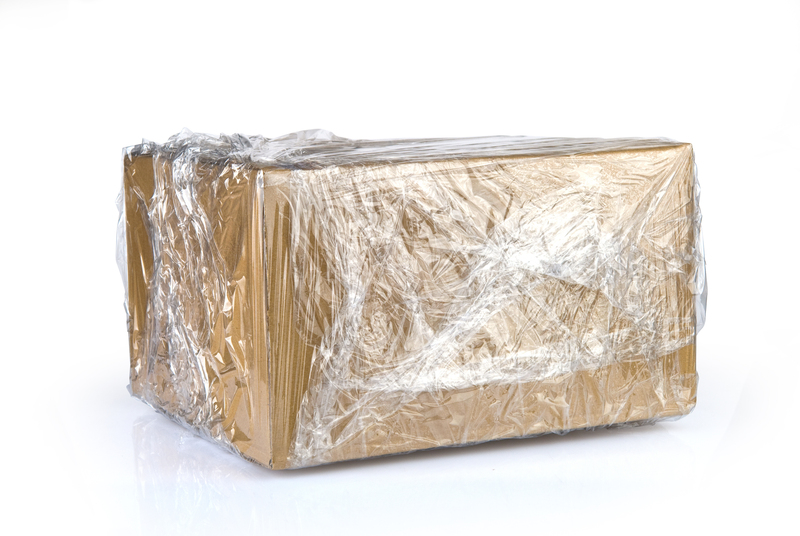The Ultimate Guide to Moving Your Mattress and Bed
Posted on 26/05/2025
The Ultimate Guide to Moving Your Mattress and Bed
Moving your mattress and bed can seem like a daunting challenge--whether you're relocating to a new home, rearranging furniture, or transporting your bed for storage. A successful move not only preserves the quality and lifespan of your sleeping setup but also ensures your health and comfort remain uncompromised. In this comprehensive, SEO-optimized guide, you'll find everything you need to know about moving a mattress and bed. We'll cover step-by-step procedures, expert techniques, essential supplies, and troubleshooting tips to help make your move as stress-free as possible.
Why Properly Moving Your Mattress and Bed Matters
Moving your bed frame and mattress incorrectly can lead to:
- Structural damage to the bed frame
- Permanent dents or sags in the mattress
- Soiled or torn fabrics from improper handling
- Potential bodily injury during lifting or maneuvering
Proper techniques and planning safeguard your investment, and ensure your bed looks and feels as good in your next home as it does now.

Planning Ahead: The Key to a Smooth Mattress Move
Successful bed and mattress relocation begins with preparation. Organization is everything! Here's how to get started:
Take Measurements
- Measure your mattress, bed frame, and the dimensions of doorways, hallways, elevators, and staircases.
- Consider potential obstacles and tight corners.
- Take photos of how your bed is assembled, for easier reassembly later.
Gather Essential Supplies
The right tools can make moving your mattress and bed much easier. Stock up on:
- Mattress bags or covers (preferably waterproof, to prevent stains and tears)
- Furniture blankets or moving pads
- Bubble wrap or plastic wrap
- Packing tape
- Cord, straps, or rope
- Phillips-head and flathead screwdrivers
- Hex key (Allen wrench, for most bed frames)
- A dolly or hand truck (especially for larger items)
- Permanent marker and zip-lock bags (for screws and small hardware parts)
Enlist Help
- Ask friends or family members to assist. Mattresses and bed frames can be unwieldy, and having extra hands is safer and more efficient.
- If moving alone is unavoidable, consider hiring professional movers especially for king-size or heavy mattresses.
How to Disassemble and Prepare Your Bed Frame
Disassembling your bed frame before moving will prevent damage and make transportation easier. Follow these steps:
- Remove all bedding, pillows, and accessories. Wash and pack these separately.
- Detach the mattress and box spring. Place protectors or covers over them immediately to avoid stains or tears.
- Disassemble the bed frame carefully:
- Start with side rails, then remove any slats or supports.
- If the bed frame uses bolts, keep all hardware in labeled ziplock bags or envelopes.
- Wrap bed components in moving blankets or bubble wrap.
- Label all parts for easier reassembly. For complex bed frames or platform beds, take photos of each step.
Special Tips for Adjustable Beds, Murphy Beds, or Bunk Beds:
- Refer to your manufacturer's instructions for safe disassembly.
- Disconnect or unplug motors and electronics on adjustable beds.
- Choose a secure storage location for small parts and hardware.
- For Murphy beds, consider hiring a professional, as these can have complex mechanisms and springs.
How to Move Different Mattress Types
Depending on the type of mattress you own, the moving process may vary:
Moving a Memory Foam or Latex Mattress
- These mattresses are heavy (sometimes 90-150 lbs for a queen) and less rigid than innerspring, making them harder to maneuver.
- Bend as little as possible to avoid damaging the foam structure.
- Keep the mattress upright on its side with a helper, and use a mattress bag for protection.
- If moving a mattress long-distance, avoid storing it on its side for weeks--it may lose its shape.
Innerspring Mattresses
- Generally lighter, but floppier. Grip tightly by the handles (if present) or with mattress straps.
- Keep the mattress flat or on its side for short moves.
- Avoid bending -- if the springs bend, they may never return to shape.
Hybrid and Pillow-Top Mattresses
- Often bulky and heavy. Move upright, and always cover in a waterproof bag.
- Use two or more people for lifting and maneuvering.
- Do not fold -- inner materials can rip or break.
Box Springs & Foundations
- Wrap in plastic sheets.
- Beware: some foundations have cardboard bases that can easily puncture. Avoid dragging or sliding them across floors.
Packing and Protecting Your Mattress and Bed Parts
Prepping every component can dramatically reduce risk of damage or soiling during your move.
Protect Your Mattress
- Always use a mattress bag or protector, even for short moves.
- Seal the bag tightly with packing tape. Consider double-bagging if expecting rain or dirt exposure.
- Never tie rope or straps directly around an uncovered mattress--it may cause permanent indentations.
Wrapping the Bed Frame
- Use moving blankets, bubble wrap, or shrink wrap for headboards, footboards, and rails.
- Pay special attention to corners and decorative finishes to prevent scratching or chipping.
- For wooden frames, ensure all hardware is fully removed or tightly secured in bags.
Labeling and Organizing Parts
- Keep all small hardware like screws and bolts together, labeled by bed part (e.g., "side rails" or "headboard").
- Secure hardware bags to a large bed component or tape to the inside of the mattress bag for retrieval upon reassembly.
The Best Techniques for Carrying and Loading
How to Safely Carry a Mattress
- Bend at the knees and lift with your legs, not your back.
- Keep the mattress vertical on its side--this eases navigation around corners.
- For large or heavy mattresses, use moving straps or a shoulder dolly system to share the load between lifting partners.
- If carrying upstairs, turn the mattress slightly so one end is higher than the other.
Transporting Bed Frames and Parts
- Move each piece separately to reduce weight and risk of bumping doorways or stairs.
- For long headboards, secure with blankets and carry with two people at either end.
- Roll up slats and secure with plastic wrap.
Loading into a Moving Truck or Vehicle
- Place the mattress upright against a wall in the truck, secured with straps to prevent it from shifting during transit.
- Avoid stacking heavy items on top of the mattress.
- Lay the bed frame pieces flat or upright alongside the mattress, padding with blankets to prevent movement.
- If your vehicle is not large enough, consider renting transport or using professional mattress moving services.
Tips for Moving a Mattress in Different Scenarios
Moving in an Apartment Building
- Reserve the elevator and measure its interior dimensions.
- Use mattress carrying straps to avoid blocking corridors.
- Protect floors and walls from dings with moving blankets.
Moving a Mattress Up or Down Stairs
- Always carry with two people, one leading and one following.
- Go slow -- some mattresses are so flexible they can "sag" as they round corners.
- Take breaks as needed. Don't rush!
Moving in Bad Weather
- Double-bag the mattress to shield from rain or snow.
- Keep walkways clear and dry to prevent slips.
- If possible, schedule the move for a dry period or move the mattress while covered by a tarp or inside a van.
DIY vs. Professional Mattress Moving
Deciding whether to move your bed and mattress yourself or hire professionals depends on several factors:
- Distance of the move (local vs. long-distance)
- Weight and size of your mattress and bed frame
- Physical ability and available help
- Access in both your current and new location (stairs, elevators, narrow doors, etc.)
Benefits of Professional Mattress Moving Services
- Specialized equipment and trucks designed for large mattresses and bed frames
- Proper insurance for damage protection
- Expert knowledge on disassembly and reassembly
- Time and stress saved, especially for challenging moves
Savings and Satisfaction with DIY Moving
- Potential cost savings
- Complete control over the process and handling
- The satisfaction of a successful move accomplished on your own!
Common Mistakes to Avoid When Relocating Your Mattress and Bed
Even with the best intentions, mishaps can happen. Here are top mistakes to avoid during your mattress and bed move:
- Forgetting to protect your mattress or bed frame, resulting in dirt, tears, or moisture damage
- Attempting to move a king-size mattress alone--this is a recipe for injury or disaster!
- Losing essential hardware for the bed frame by not labeling and storing in bags
- Dragging the mattress or bed frame across floors--always lift!
- Bending or folding mattresses that aren't designed to be bent (especially memory foam and hybrid types)
- Stacking heavy items on top of a mattress during transit
Setting Up Your Bed in Your New Home
After a safe arrival, it's time to reassemble and enjoy your bed. Here's how:
- Unpack and inspect all mattress and bed frame components for any damage during the move.
- If your mattress was transported in a bag, remove the cover and allow it to air out for a few hours.
- Reassemble the bed frame by following your photos or manufacturer's instructions. Use proper tools and tighten all bolts or screws evenly.
- Place the mattress on the frame, ensuring it's well-supported and aligned.
- Add your fresh bedding, pillows, and any accessories.
Pro Tip: If a foam mattress feels misshapen after transport, lay it flat in a warm room--most memory foam will regain its correct shape within a day.

FAQ: Common Questions About Moving Mattresses and Beds
Can I fold my mattress for moving?
No, unless it's specifically designed as a folding or roll-up mattress (such as bed-in-a-box types). Most memory foam, latex, and hybrid mattresses should never be folded tightly. Innerspring may allow slight bending, but check your mattress warranty first.
How do I move a bed up a narrow staircase?
Measure the staircase width before starting. If possible, move the mattress upright and go slowly around corners. For platform or large frames, consider partial or full disassembly for easier maneuvering.
Should I clean my mattress before moving it?
Absolutely. Vacuum and spot-clean prior to packing, and ensure it's fully dry to avoid mildew during storage or transit.
Is it safe to store a mattress on its side?
For short-term moves, yes. For long-term storage, it's best to store flat--as standing mattresses for weeks or months can lead to deformation, especially with foam mattresses.
Final Thoughts: Enjoy a Restful Sleep After Moving
Moving your mattress and bed doesn't have to be a nightmare. By planning ahead, using the right supplies, and following expert tips, you'll arrive at your new home with your bed--and sanity--intact. The comfort of a well-preserved mattress and sturdy bed frame is worth the effort, ensuring that your first night in your new space is restful and restorative.
Are you ready to tackle your next mattress move? Use this ultimate guide to moving your bed and mattress as your road map, and enjoy a smooth, seamless transition to sweet dreams in your new home!

_result.jpg)
_result.jpg)




